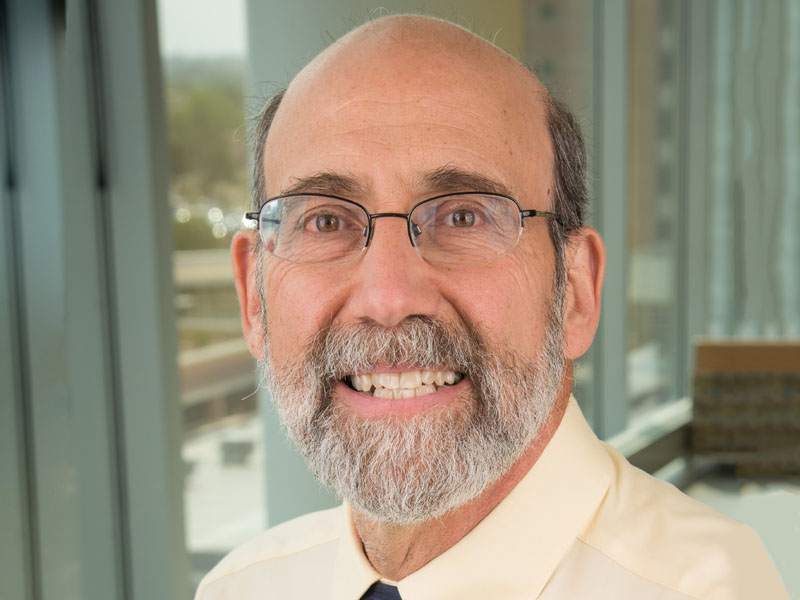Advanced Life Support in Obstetrics: 30 Years of Filling Gaps
December 2, 2021, 2:08 p.m. Mark Deutchman, M.D. — Regardless of where or how we train and practice (or how long we practice), physicians may have knowledge or skill gaps that we don’t even realize. That was certainly the case for me.

This year marks the 30th anniversary of the AAFP’s Advanced Life Support in Obstetrics course, and I’ve been involved since its early days. I helped write the first manual, have taught the course in the United States and abroad and served as program chair. Although I feel like I should know it all on this important topic, ALSO helpfully reminds me that I don’t.
And that is the beautiful thing about ALSO — it fills our gaps with an evidence-based approach.
When I finished family medicine residency training in 1978 in Spokane, Wash., I was recruited to a private practice 250 miles away in tiny White Salmon, Wash., specifically because I was interested in obstetrics and could handle many surgical procedures, including cesarean delivery and ectopic pregnancy. In 12 years, I delivered more than 600 babies and performed more than 1,000 surgeries at our rural hospital. I was the lone physician offering surgical obstetric services for several years there, and the nearest tertiary facility was 60 miles away.
In 1990, I moved to Memphis to join the faculty of the University of Tennessee Department of Family Medicine. I was recruited there to meet the department’s goal of training family physicians in the skills needed for rural practice, including tubal ligation, forceps-and-vacuum extraction, cesarean section and dilation and curettage. I also was the principal organizer and teacher for an obstetrics fellowship.
A year later, John Beasley, M.D., and Jim Damos, M.D., of the Department of Family Medicine at the University of Wisconsin School of Medicine and Public Health developed ALSO to help rural physicians learn and maintain emergency obstetric skills. I was invited to participate and co-wrote chapters for the early course manual regarding first trimester complications, ultrasound and cesarean delivery.
Despite my experience, I realized I still had more to learn because ALSO moves us away from the “I do it this way” mindset. It also helps us speak the same language and enables us to have similar approaches so when we encounter these uncommon but high-stakes problems we have a basis for dealing with them in a complementary and collaborative way.
I didn’t have an organized approach to shoulder dystocia until ALSO taught me that. ALSO immunizes learners against forgetting things so we don’t leave steps out, and it gave me a better and more skilled approach to assisted vaginal delivery, especially vacuum and forceps.
ALSO emphasizes the importance of looking critically at evidence and choosing the right approach, and that was not common during the early 1990s. The evidence-based medicine movement has blossomed since then, and ALSO has played an important role in that for family medicine.
ALSO is commonly taught to residents in family medicine programs throughout the United States. The course, which is updated every three years, is valuable for physicians in practice, as well, because it keeps us up to date on information regarding diagnosis and management, and provides an opportunity to practice skills that may be used infrequently but are critically important when needed.
The course originally was a two-day program with a mixture of lectures and hands-on skill sessions. It has evolved and now features a one-day, online curriculum and one day of in-person, hands-on skill sessions and testing. The curriculum focuses on individual skills, but also teaches the learner how to lead a care team through different obstetrical emergencies.
The course, which was purchased by the AAFP in 1993, has been attended by more than 75,000 U.S. clinicians and has been taught in more than 60 other countries. Studies have shown that ALSO decreases maternal mortality, episiotomy, postpartum hemorrhage and severe postpartum hemorrhage rates, and increases active management of labor and vacuum-assisted delivery.
Clinicians who take the ALSO course are prepared to deal with or prevent problems because of that training. They understand how to deal with gestational hypertension, preeclampsia and shoulder dystocia, and they know when to use assisted delivery and how to interpret fetal monitor strips.
Some of these issues are uncommon, but when they do occur, we must know what to do and how to do it. ALSO is the answer.
Mark Deutchman, M.D., is an associate dean for rural health, director of the Rural Program and professor of family medicine at the University of Colorado School of Medicine. He also is a professor in CU’s School of Dental Medicine and its School of Public Health.